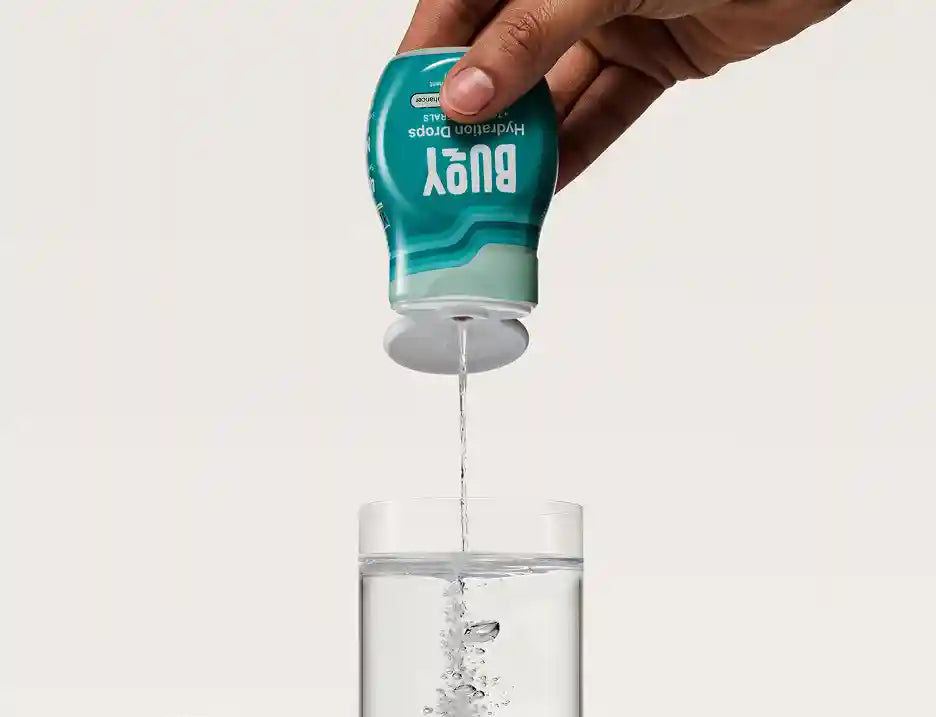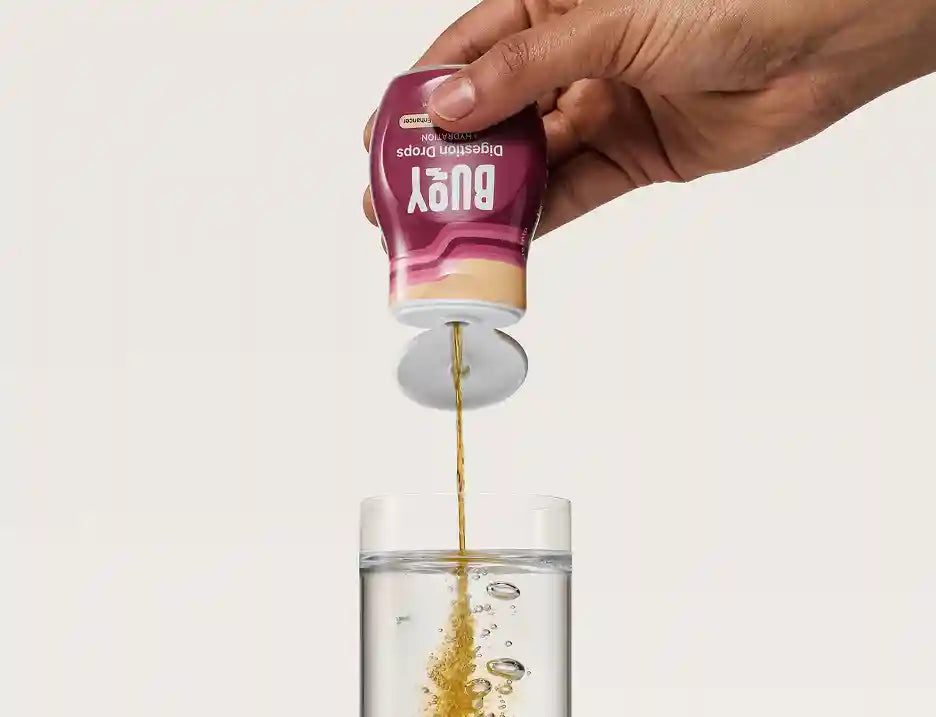
How Calcium, Magnesium, and Sodium Work Together to Support Hydration
Share
Hydration isn't just about water - it’s about the minerals that carry water to where your body needs it most. Calcium, magnesium, and sodium play pivotal roles in fluid balance, muscle performance, and overall hydration health. This guide reveals exactly how these minerals interact with one another, why their balance matters, and how Hydration Drops bring them together cleanly and effectively in every sip.
Imagine water entering your bloodstream but not sticking, or trying to stay hydrated in dry climates or workouts without effective mineral support, it’s a recipe for fatigue, cramps, and poor recovery. That’s where the mineral synergy comes in. Sodium draws water into cells; calcium helps regulate muscular response to fluid shifts; magnesium ensures nerve and enzyme functions stay balanced. Together, they keep your body hydrated on a deep cellular level, not just surface-level quenching.
Essential Takeaways
- Sodium, calcium, and magnesium each play distinct roles in hydration - fluid balance, muscle control, and cellular uptake.
- They interact, supporting or inhibiting shifts in hydration depending on their relative levels.
- Hydration Drops deliver balanced mineral synergy, ensuring efficient, sugar-free hydration where and when your body needs it.
If you're active, traveling, or simply want to feel more balanced, understanding mineral interactions hydration lets you hydrate with purpose. Hydration Drops offer this blend of three relationship-rich minerals - all sugar-free, all travel-friendly, and easy to dose. This post breaks down how they work, why balance matters, and how to use them smartly in your daily routine.
- Why Mineral Interactions Hydration Matter
- Sodium - The Hydration Gatekeeper
- Calcium - Guiding Fluid with Muscle and Vessel Control
- Magnesium - Ensuring Hydration Flow and Cellular Uptake
- The Triad in Sync - Why Balance Beats Single-Mineral Focus
- How to Use Hydration Drops for Balanced Mineral Hydration
- Building a Daily Mineral Hydration Routine
Why Mineral Interactions Hydration Matter
Hydration isn’t just the quantity of water - it's also the quality of your mineral mix. Sodium helps water stay in your system; calcium supports blood vessel contraction and muscular tone; magnesium keeps nerve and enzyme systems responsive. When these minerals are out of balance, hydration falters. For example, low sodium means water flushes through too fast; low calcium or magnesium can leave water stranded in spaces that don’t serve cells well¹².
Balancing these minerals ensures water gets into your cells and stays there. Whether you're sweating it out or sitting in dry environments, hydration without mineral interactions leads to fluid inefficiency. This is why a single-mineral approach falls short - hydration relies on how calcium, sodium, and magnesium cooperate - not just how much water you're drinking.
Sodium - The Hydration Gatekeeper
Sodium is the body’s primary extracellular mineral - its job is to pull water into your bloodstream and tissues. Through the process of osmosis, sodium maintains fluid balance, helps regulate blood pressure, and encourages thirst, making it a hydration trigger³. But too much sodium can lead to retention and high blood pressure, while too little means water rushes through without benefitting cells or sustaining hydration⁴.
In the hydration triad, sodium acts like a maestro - it directs fluid movement and supports the function of calcium and magnesium, ensuring the hydration signal reaches cells.
Calcium - Guiding Fluid with Muscle and Vessel Control
Calcium, best known for supporting bones, plays a vital role in helping blood vessels contract or relax, which in turn guides hydration where it’s needed most. It also helps muscles respond appropriately - either staying firm or relaxing as needed. Imbalances in calcium can disrupt proper hydration distribution, making fluids less efficient at reaching cells⁵.
Calcium's role as a “hydraulic controller” complements sodium’s pull and magnesium’s flow, keeping hydration moving smoothly throughout the body.
Magnesium - Ensuring Hydration Flow and Cellular Uptake
Magnesium may be less flashy, but it's deeply involved in hydration quality. It stabilizes ATP (the cell’s energy currency), supports hundreds of enzymatic processes, and helps regulate calcium release in muscles. Low magnesium can impair the sodium-potassium pump, reducing cellular water uptake and causing cramps or fatigue⁶.
Magnesium is the unseen ally that makes hydration functional, helping calcium and sodium work effectively for real, lasting hydration.
The Triad in Sync - Why Balance Beats Single-Mineral Focus
Each mineral excels in its role but together, they create true hydration synergy. Sodium draws water in; calcium directs vessel and muscle response; magnesium ensures that hydration reaches and fuels cells efficiently. If one is out of tune - high sodium without magnesium, for example you may feel bloated, unevenly hydrated, or sluggish.
Hydration Drops deliver these minerals in balanced, bioavailable doses - no sugar, no guesswork - supporting mineral interactions with hydration seamlessly, whether you're prepping for exercise, sitting all day, or fighting dry air at altitude.
How to Use Hydration Drops for Balanced Mineral Hydration
Hydration Drops make mineral interactions simple and efficient:
-
One squeeze per 8 oz of water. Ideal for daily maintenance.
-
Use before, during, and after activity to maintain mineral balance under stress and sweating.
- Safe for all-day sipping - zero sugar, zero calories, and easy on sensitive stomachs.
Because the minerals in Hydration Drops act together, every drop supports hydration on multiple levels - cellular uptake, fluid retention, and muscle balance - without overwhelming your system.
Building a Daily Mineral Hydration Routine
Make hydration easy and effective with a small team of habits:
-
Morning: Add Hydration Drops to your breakfast beverage - kickstart mineral balance early.
-
Pre/Post Activity: Hydrate with Rescue Drops before movement; follow with another dose after as needed.
-
At Your Desk: Sip water with drops regularly to counter dry office or heated environments.
- Before Bed: Rehydrate with a mild mineral drink - supports overnight recovery and cell hydration.
Consistent, balanced mineral intake fuels your hydration - beyond just drinking water, you're ensuring those minerals interact properly to support every cell.
True hydration starts with understanding mineral interactions. Calcium, sodium, and magnesium aren’t interchangeable extras - they’re essential team players that must work together, or hydration falls short. Hydration Drops deliver that balance in a clean, sugar-free formula, making every sip purposeful.
If you're tired of surface-level hydration or want your efforts to translate into real fluid balance, performance, or wellness - this triad is how you get there, simply and effectively.
References
- MedlinePlus, Fluid and Electrolyte Balance, May 2024.
- Cleveland Clinic, Electrolytes Purpose & Levels, 2023
- American Heart Association, Sodium Restores Hydration, June 2024.
- Healthline, Osmosis and Sodium in Hydration, Oct 2018.
- NCBI, Mineral Interactions in Drinking Water, 1980.




